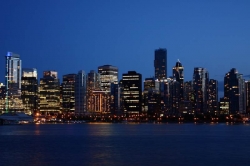- Home
- Tutorial
- Resource Guides
- Focus Areas
- LSF Programs
-
Professional
Development - Review Process
-
A project of LSF

Search for Resources
Description
Artificial light is essential to modern life, but as world populations have increased and technologies have evolved our night skies are becoming brighter and brighter. Many people do not realize that all of this light is actually a pollutant that can waste energy, disrupt animal migrations and affect the physiological processes of many organisms. In this activity students consider how community light sources could be contributing to night-time “sky glow” and develop action strategies that could reduce light pollution while keeping their neighbourhoods safe and healthy.
General Assessment
Recommendation of how and where to use it
This activity supports Grade 4-8 Science curriculum exploring the properties and behaviour of light and electricity. Students also identify inefficient and wasteful light sources within their town from the perspective of sustainable energy use and environmental impacts.
Pupils brainstorm ideas for reducing light pollution and the local focus of the activity provides an opportunity to extend the learning into a community action project. The class could work with the municipality to develop a plan to reduce the intensity, scattering and duration of artificial light on local public buildings. This project might also be used to raise awareness among homeowners of practices that reduce energy consumption costs while also helping to darken local skies.
Relevant Curriculum Units
The following tool will allow you to explore the relevant curriculum matches for this resource. To start, select a province listed below.
- Step 1Select a province
- Alberta
- British Columbia
- Manitoba
- New Brunswick
- Newfoundland & Labrador
- Northwest Territories
- Nova Scotia
- Nunavut
- Ontario
- Step 2Select a grade level
- Grade 4
- Step 3Select a subject
- Science & Technology
- Step 4Relevant matches
- Matter and Energy: Light & Sound
- Prince Edward Island
- Quebec
- Step 2Select a grade level
- Grade 8
- Step 3Select a subject
- Science & Technology
- Step 4Relevant matches
- The Earth and Space
- Saskatchewan
- Yukon Territory
Themes Addressed
Citizenship (1)
- General Guide to Taking Action
Energy (1)
- Energy Use
Land Use & Natural Resources (1)
- Sustainable Urbanization

